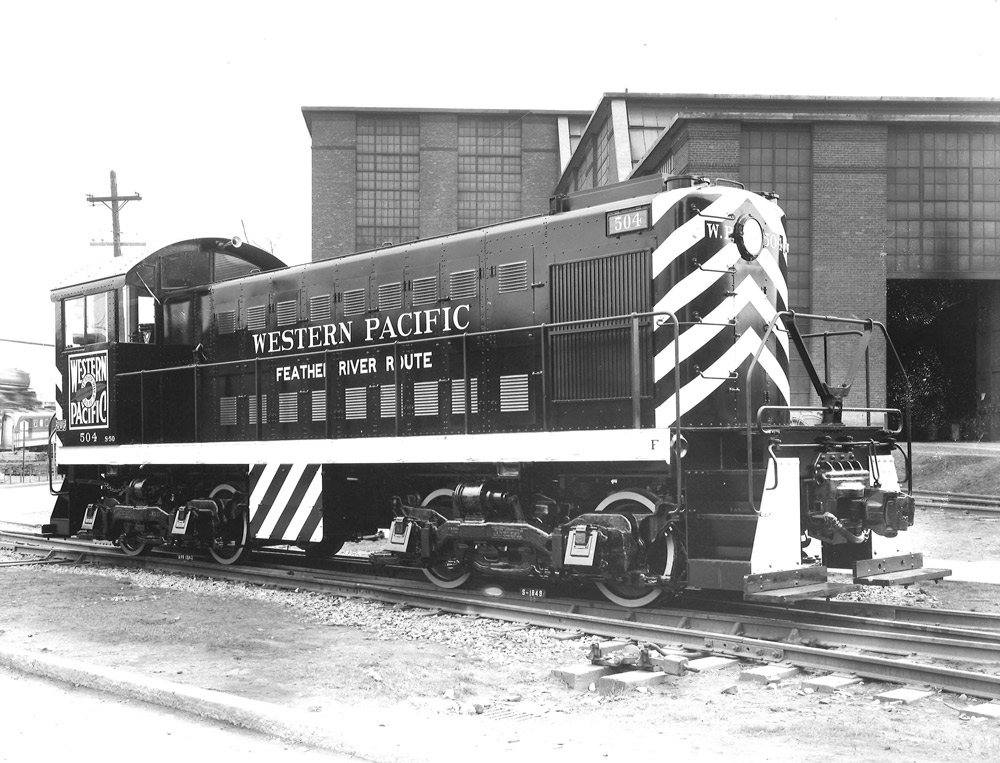
Alco S2 diesel switcher 504
Western Pacific’s second order for diesel locomotives (after three Electro-Motive SW1 switchers in 1939) was for eight Alco S1 switchers in 1942. Brand-new S1 No. 504 poses at Alco’s Schenectady (N.Y.) plant. Note the steam locomotive (blurred by its movement) and Southern Railway DL109 diesel in the left background.
Alco

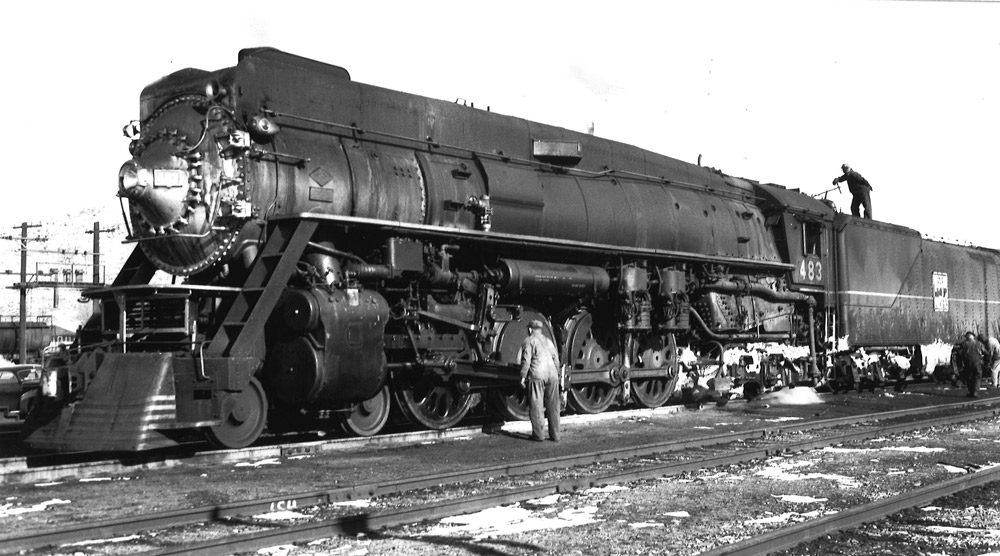
4-8-4 steam locomotive 483
Western Pacific’s final steam locomotives were six dual-service 4-8-4s built by Lima in 1943. They were virtual duplicates of a group of Southern Pacific GS-6 engines built at the same time, right down to such SP features as skyline casing, train-indicator boxes (not used on WP), and lines on the pilot.
Richard F. Thomas collection

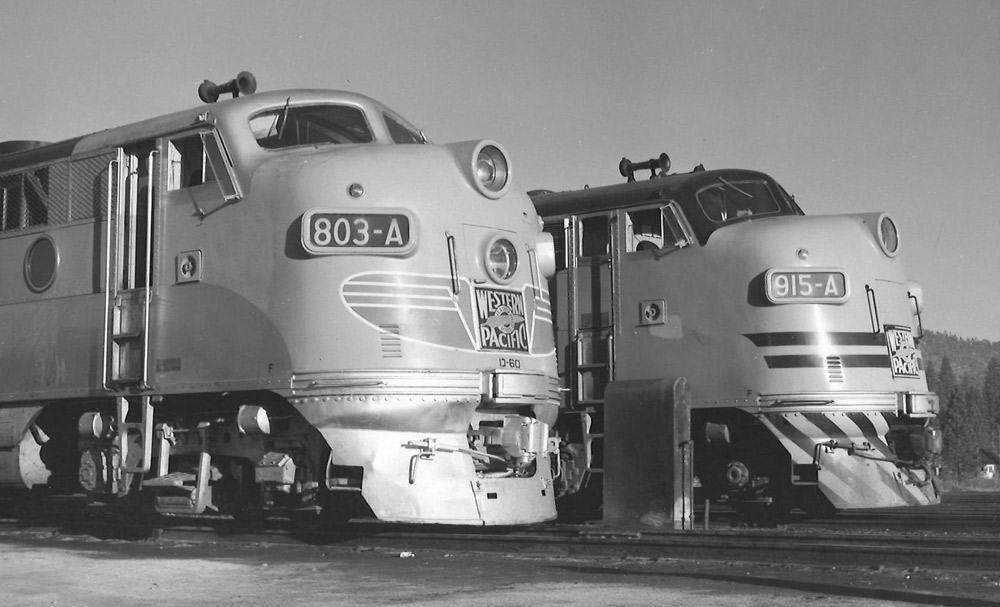
EMD diesel locomotives F3 803-A and F7 915-A
Passenger-service F3 803-A and freight-service F7 915-A display their respective paint schemes at Portola, Calif., in May 1950. Western Pacific bought three F3As and six F3Bs for passenger service in 1947 (a fourth F3A, built for the New York, Ontario & Western, later came to WP via subsidiary Sacramento Northern). WP’s 48 freight F7s (24 As, 24 Bs) arrived in 1950–51.
John C. Illman

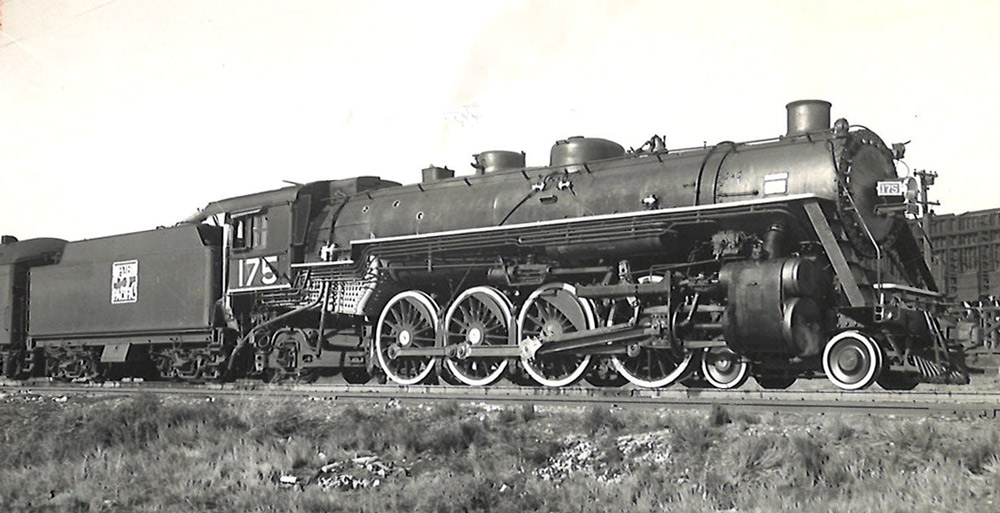
4-8-2 steam locomotive 175
Western Pacific had no 4-6-2 locomotives, hauling its passenger trains first with 4-6-0s and then 4-8-2s. WP’s 10 Mountain types came from the Florida East Coast in 1936 at the bargain price, even then, of $12,500 each. Engine 175 stands at Wendover, Nev., in 1938.T. B. Aldridge

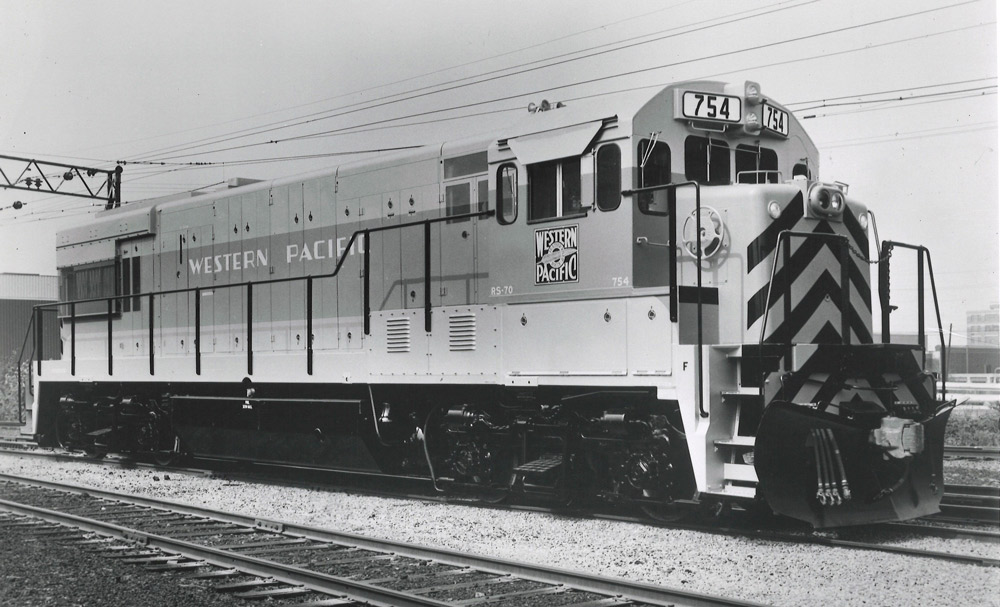
GE U30B diesel locomotive 754
Western Pacific had a total of 21 U30Bs: 19 bought new in 1967–69 (and riding on trucks from traded-in F units) and 2 ex-demonstrator units acquired in 1971. Silver-and-orange 754 is seen at GE’s Erie (Pa.) plant.
General Electric

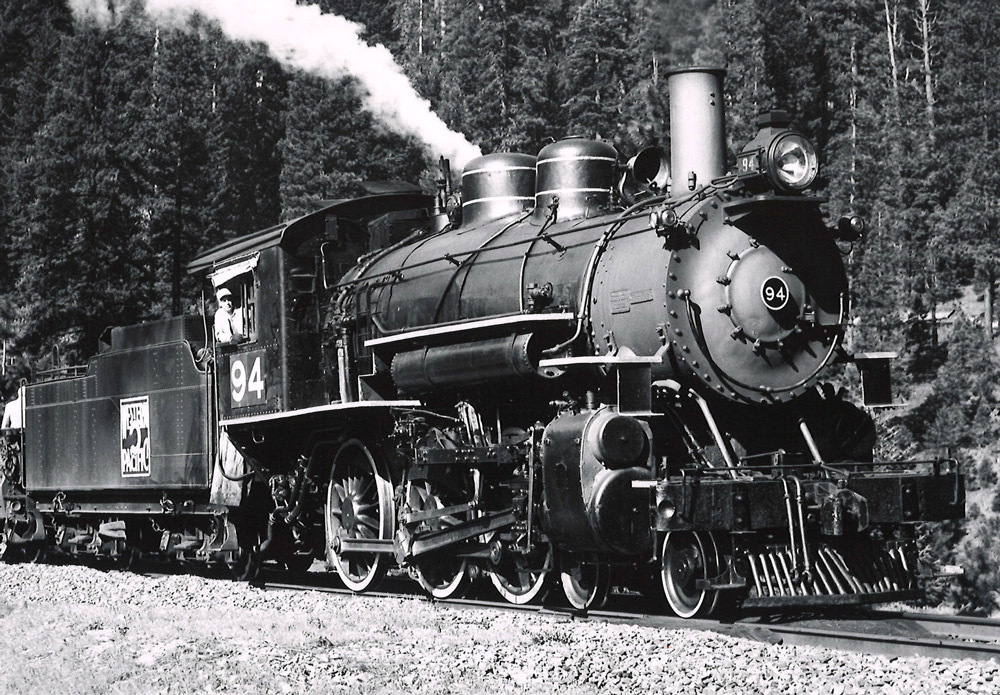
4-6-0 steam locomotive No. 94
Ten-Wheeler 94 (Brooks, 1909) was from Western Pacific’s first generation of locomotives, built around the time of the road’s completion. She was the only survivor of the original class of 36 4-6-0s at the time of this May 14, 1950, photo, taken at Williams Loop during a railfan excursion.
Guy L. Dunscomb

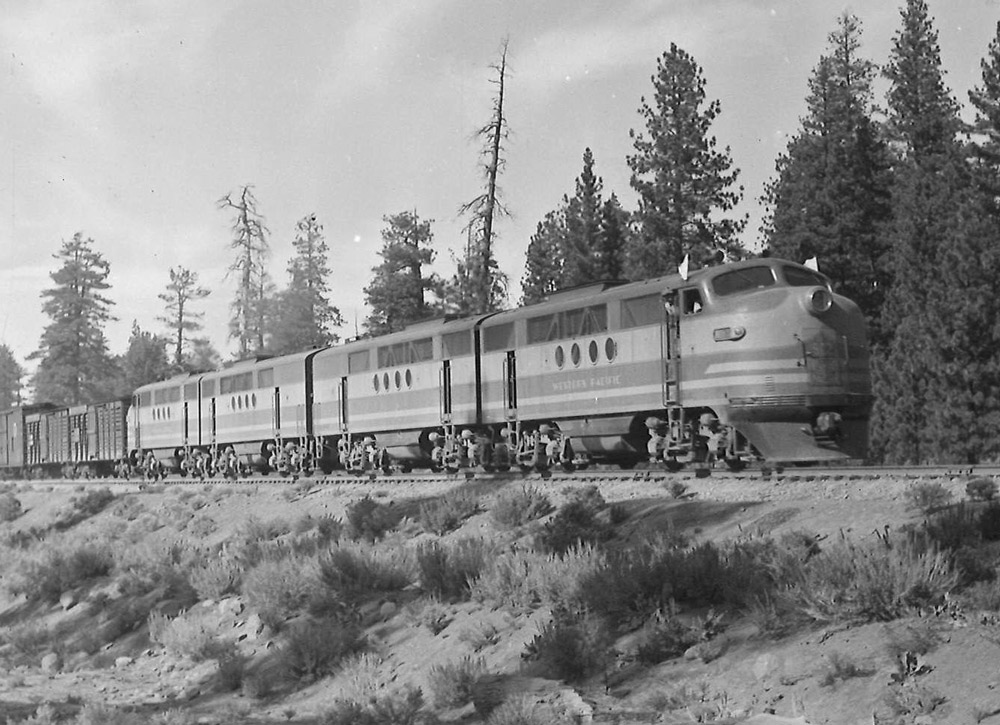
EMD FT diesel locomotives
Western Pacific had an even two dozen EMD FT cab-booster sets, built 1942–44. Two of the drawbar-connected pairs, wearing their original green-and-yellow colors, lead a freight down the Bieber Line in 1944.
Philip C. Johnson

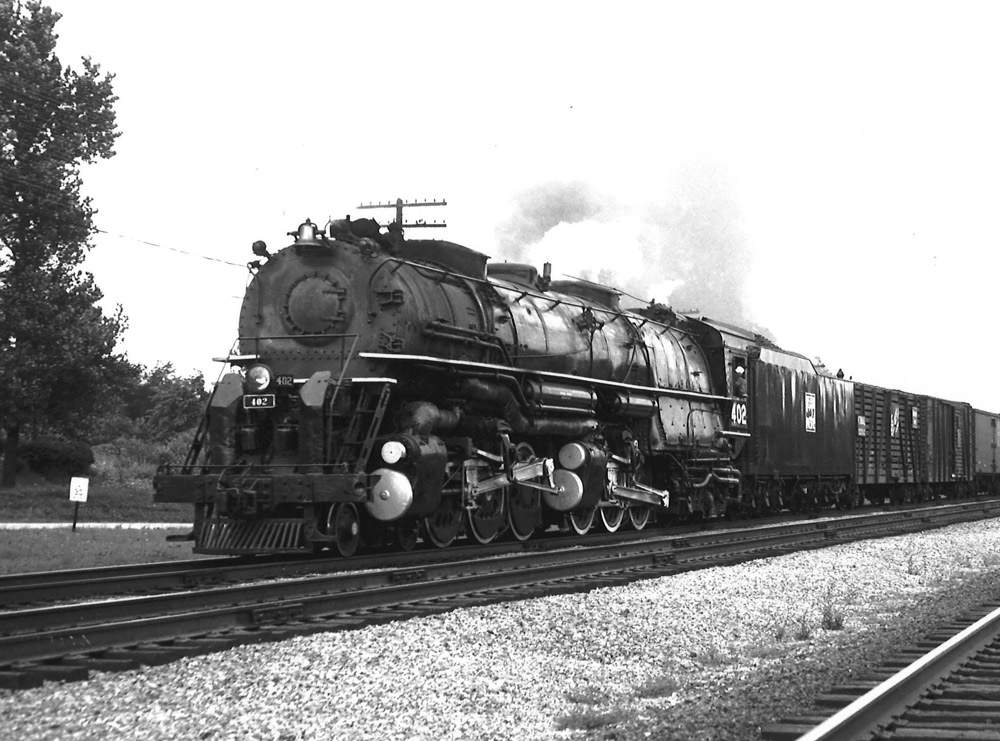
4-6-6-4 steam locomotive 402
One of Western Pacific’s seven 4-6-6-4s (Alco, 1938) rides Burlington Route rails through Downers Grove., Ill., on its way home after being displayed at the 1949 Chicago Railroad Fair. Although No. 402 looks sharp, she and her sisters were displaced from their Elko, Nev.–Salt Lake City territory by diesels the following year and saw little service thereafter.
Robert Milner

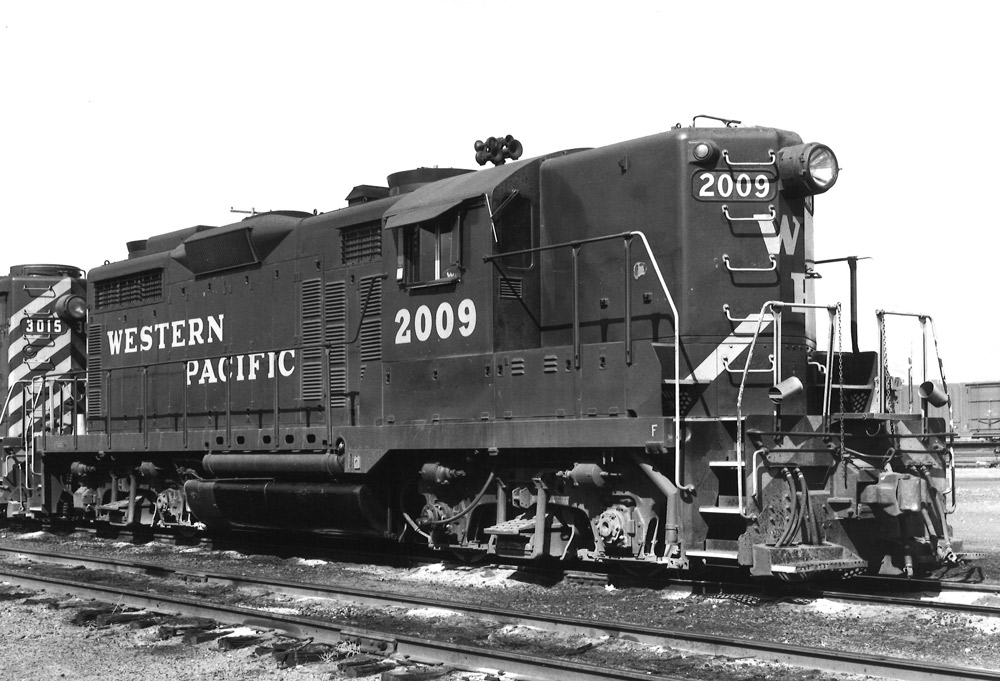
EMD GP20 diesel locomotive 2009
Western Pacific received 10 examples of EMD’s new turbocharged GP20 road-switcher in 1959–60, just before low noses gained widespread acceptance. Engine 2009, at Salt Lake City in April 1975, displays WP’s final “Perlman green” livery.
Louis A. Marre collection

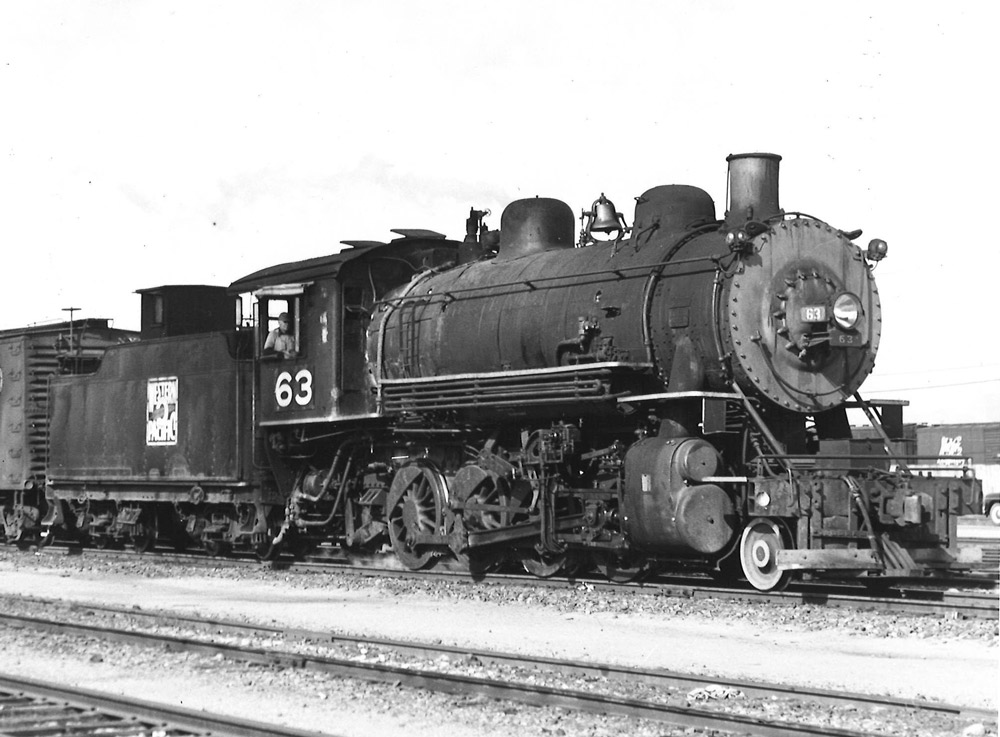
2-8-0 steam locomotive No. 63
Western Pacific’s original road freight locomotives were 65 Consolidations; 20 came from Baldwin in 1906, followed by 45 from Alco’s Schenectady plant in 1909. Engine 63 was still on the job at Oakland in 1952.
Western Pacific


2-8-8-2 steam locomotive 259
Western Pacific’s heaviest steam power was a group of 10 simple 2-8-8-2 built by Baldwin in 1931 (6) and 1938 (4).
Classic Trains collection

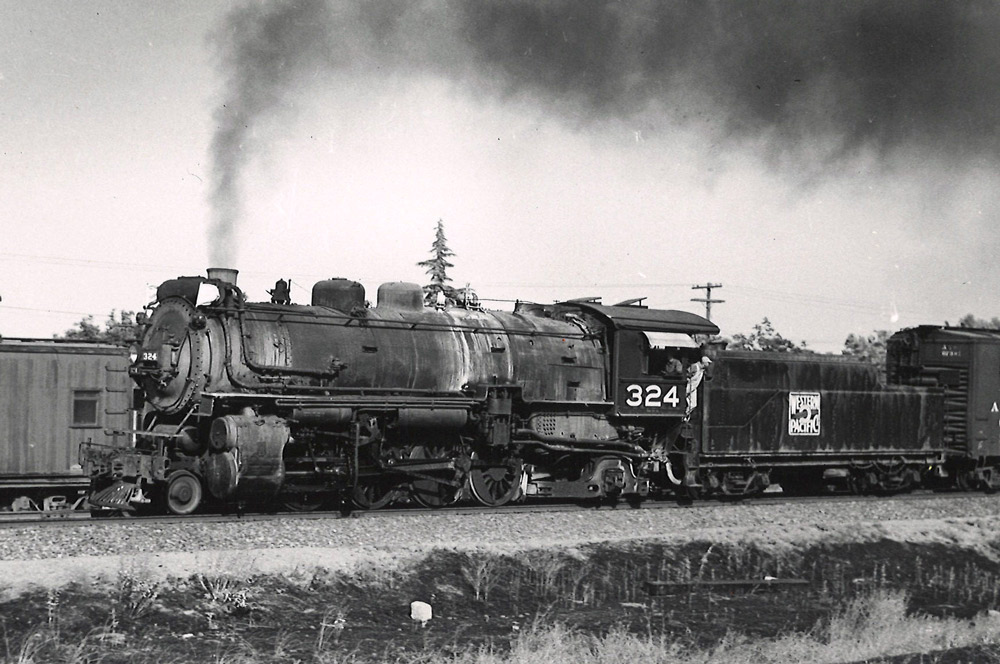
2-8-2 steam locomotive 324
Western Pacific acquired 41 Mikados between 1918 and 1929. Although later joined by 2-6-6-2s, 2-8-8-2s, and 4-8-4s, they served as front-line freight power until the end of steam. Engine 324 heads north out of Stockton, Calif., in 1949.
John F. Scott

All through August 2021, Classic Trains editors are celebrating the heritage, history, and splendor that was the Western Pacific Railroad. Please enjoy this photo gallery of locomotives selected from Kalmbach Media’s David P. Morgan Library.
Only from Trains.com!






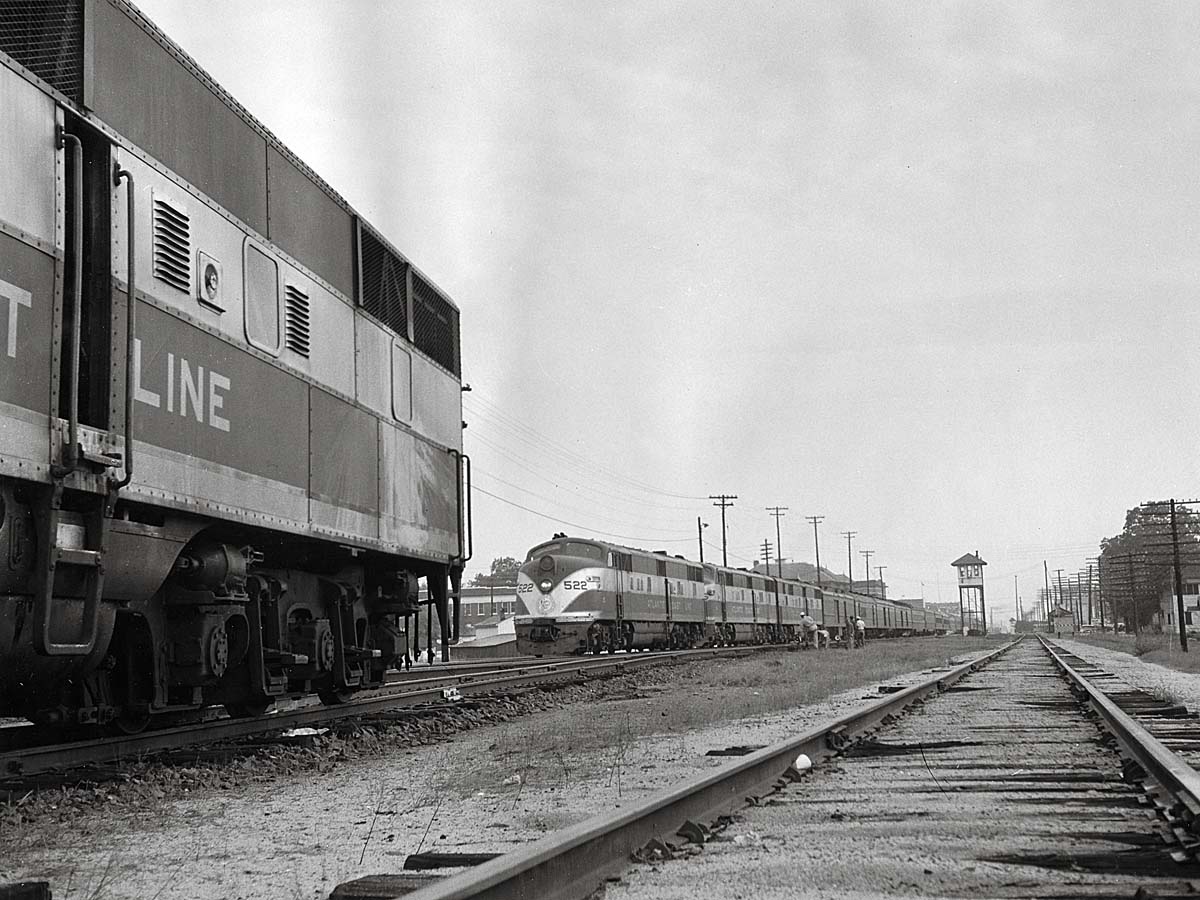
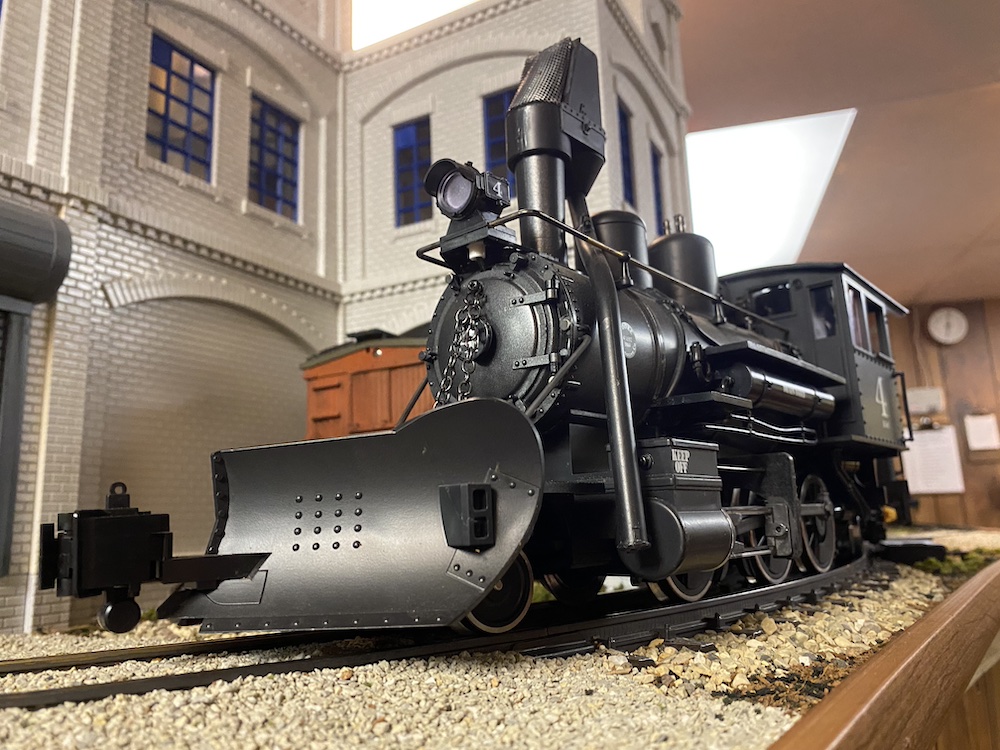

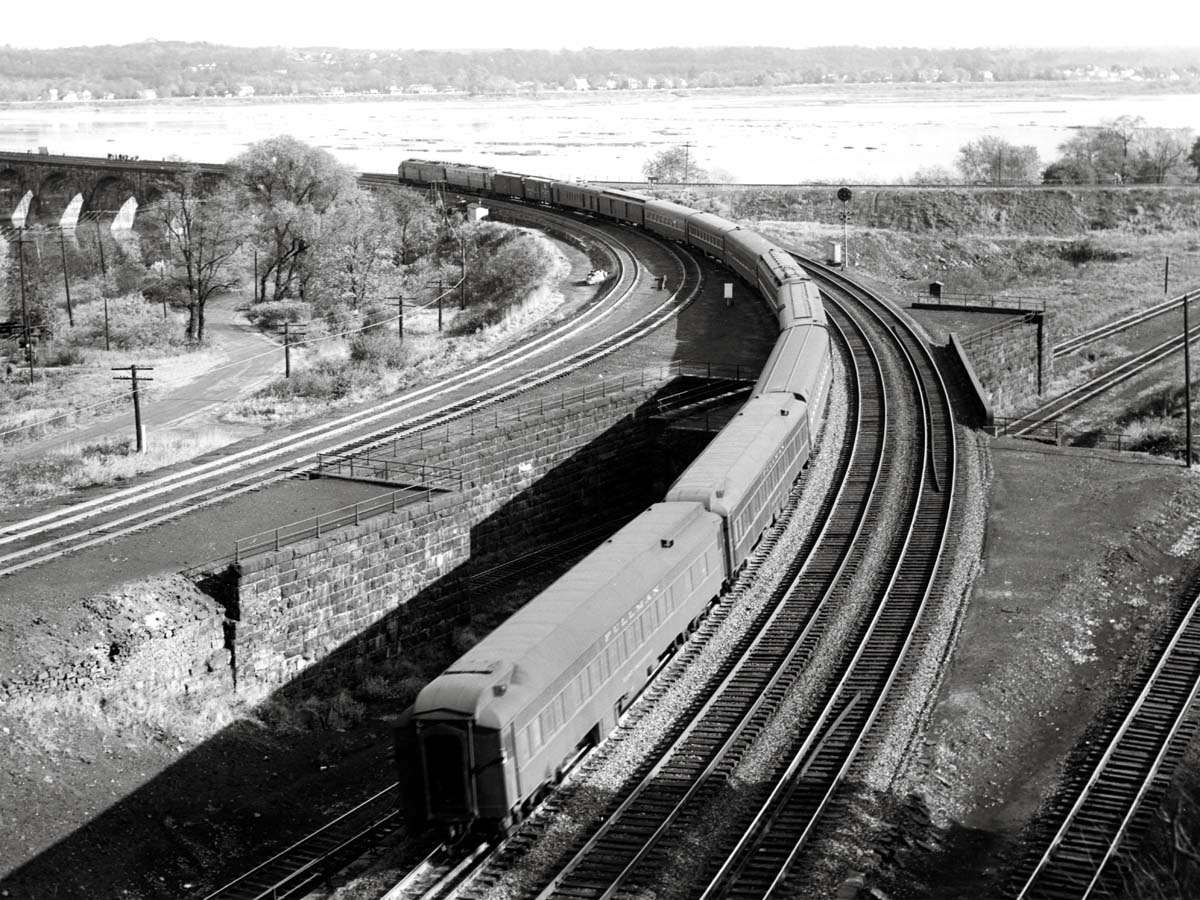




What was the reason the WP had one large headlight on the newer Geep’s?
Ed Burns, Retired Class 1